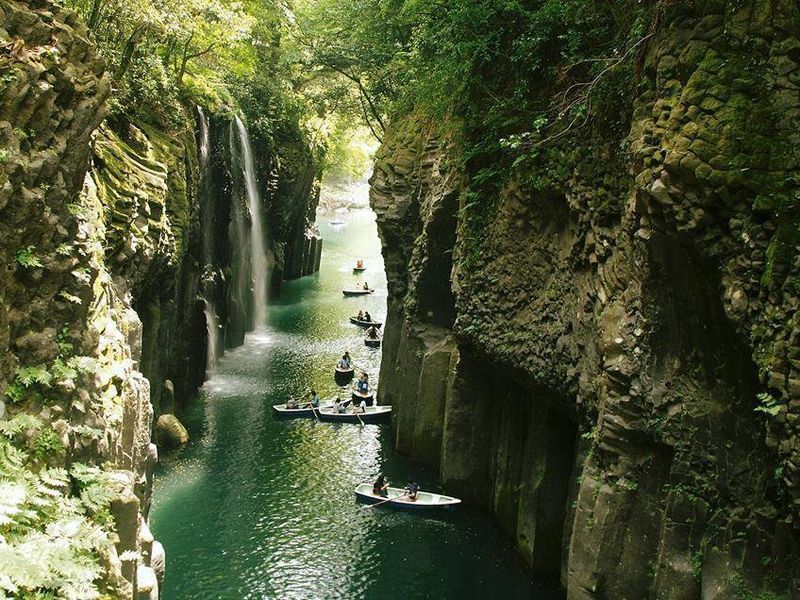The ancient city with a kind, hospitable soul always greets guests widely, festively, and brightly. Ancient monuments are among true relics. Luxurious nature, everything around is immersed in greenery. Hotels in authentic style with impeccable service.
National cuisine, capable of driving appetite crazy with its delights. And yet, after a few days, travelers get the idea: where to go from Tbilisi for 1 day?
The surroundings of the Georgian capital attract inquisitive tourists with their unique diversity and opportunities. They become a chance to dive into sparkling adventures and fill up with amazing impressions. Fans of incredible discoveries don’t even need to think about where to go; our list will easily help them make the right choice.
Borjomi
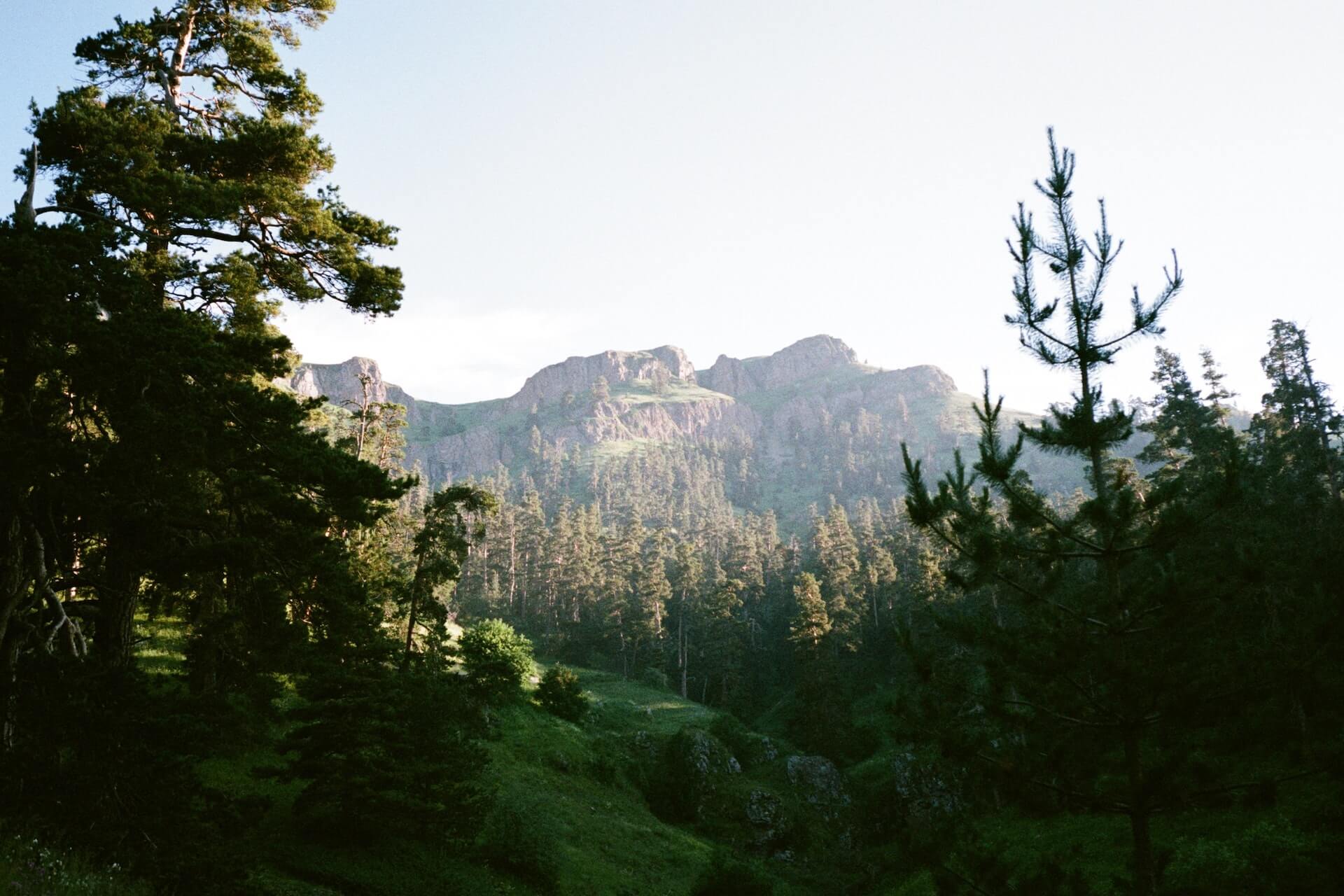
The first association that comes to all connoisseurs of Georgia with the “name” Borjomi is healing springs, mineral water, and wonderful natural landscapes. A long-deserved status – resort town. Location – Samtskhe-Javakheti region, located in the southwest of the Transcaucasian republic.
Getting here from the capital is not difficult, there are several options: a quick and quite democratic way – by taxi, a more leisurely and long one – by scheduled bus, which runs every 4 hours. Travel time – about 2-3 hours. Distance – 160 km. On-site, in a few hours, you can see architectural landmarks such as the Palace of the Romanov Imperial Family and the colorful House of Mirza-Riza-khan.
Ride the cable car to see all the beauties of the resort from above, and then stroll through the city park with its wonderful alleys with tropical plants, a beautiful waterfall, a spring with the legendary “Borjomi” water, children’s playgrounds, and attractions.
If there is time left, visit the historical and local museum, where fascinating exhibitions constantly change, and it will definitely not be boring. The whole family, from young to old, will be delighted with such a trip.
Bakuriani
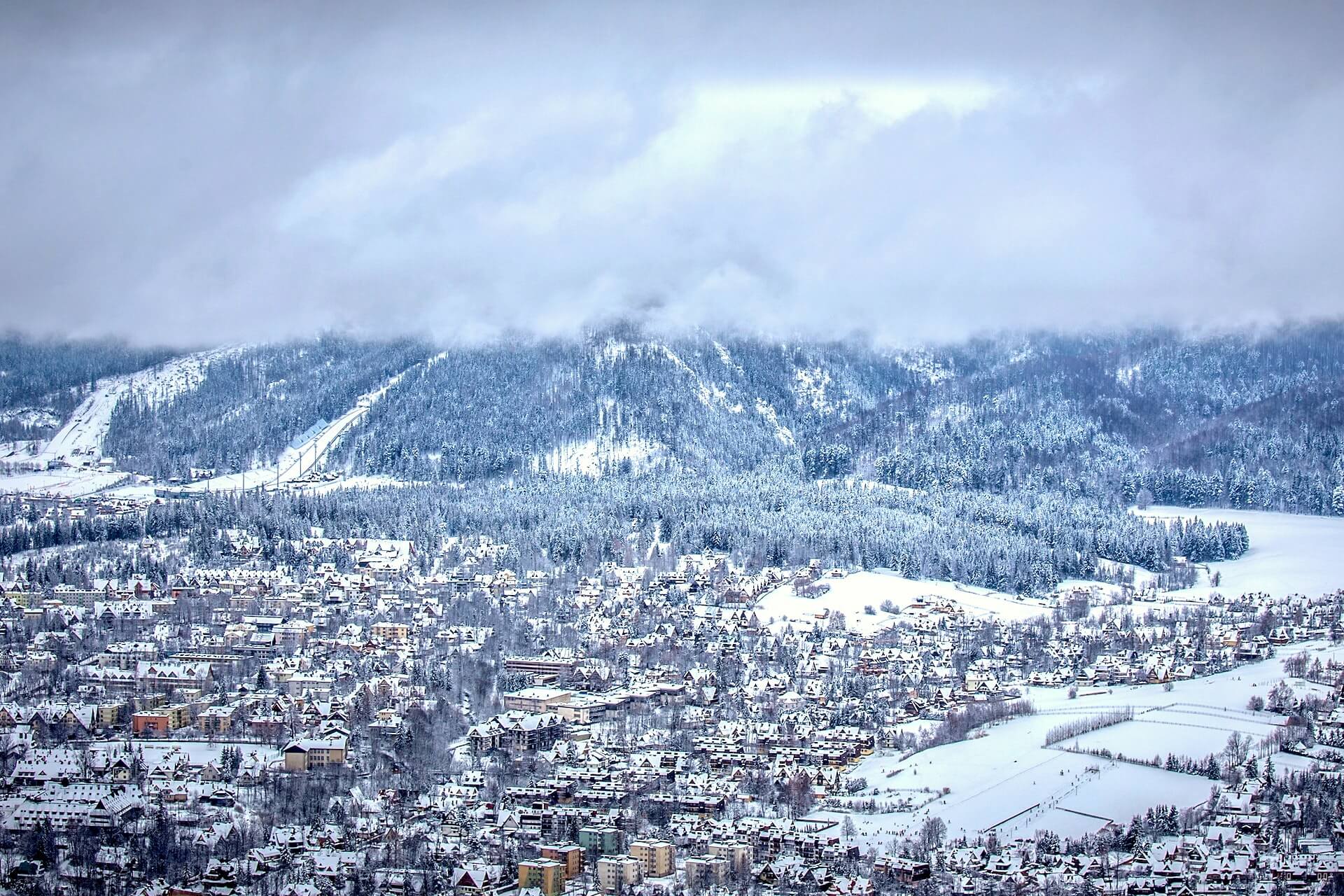
You can go to these resort “penates” either in summer or winter, although, in essence, this small corner of the country is the oldest ski resort with all the ensuing consequences. The easiest and most interesting way to the place is by narrow-gauge railway from Borjomi. This is already a separate adventure.
Many tourists still prefer the option of a taxi, the cost of the trip will not be sky-high. Distance as the crow flies – 16 km, in reality, you will have to cover about 30 km. From Tbilisi itself, the path will be longer (180 km).
A landmark for public transport from the capital is the Didube metro station, where all the necessary stops can be found. The highlight of Bakuriani is the sweet, “tasty,” and clean air at any time of the year, so saturated with the scents of coniferous trees that you want to eat it by the spoonful.
The views from the mountain slopes, if you have the opportunity to climb them, are so stunningly beautiful that you stop feeling reality: whether you are in a fairy tale or it’s a dream. Active tourists in the winter can rent skates, sleds, skis, snowmobiles, and snowmobiles.
In summer, most people prefer horseback riding or small hiking trips in the mountains. For extreme lovers who like to see everything from a bird’s-eye view, such a service as paragliding is available.
If you are very lucky and have a lot of free time, you can visit the “treasuries” of nearby tourist wonders: the mesmerizingly picturesque Tabaatskuri Lake, the ancient holy abode – Timotesubani Monastery (10th century), and the mineral springs of Mitarbi and Tsagveri.
Uplistsikhe and Gori
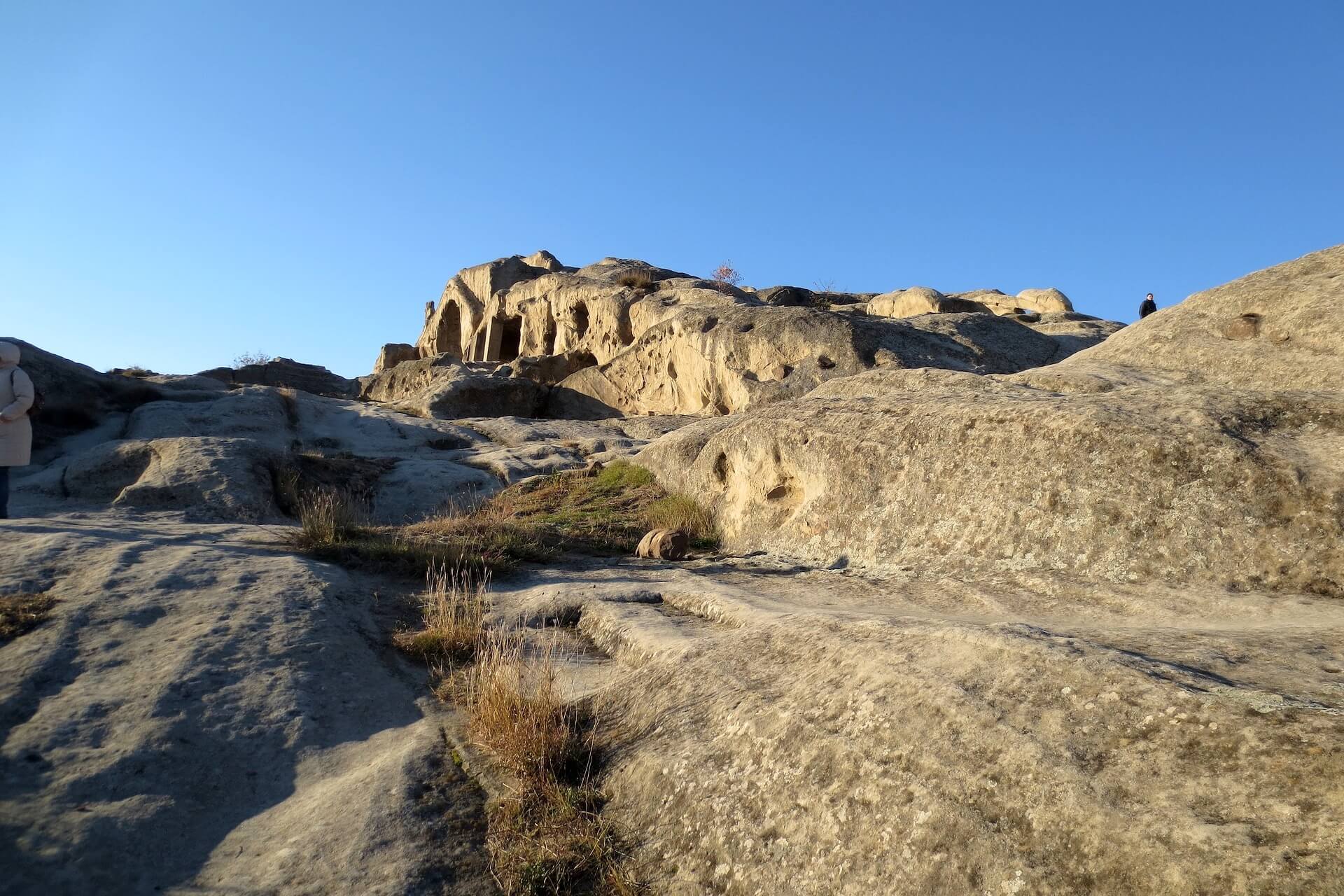
Gori, the birthplace of Stalin, is only 12 km from the cave city of Uplistsikhe, so these two attractions are often visited together. Uplistsikhe’s history spans 4 millennia, making it a living slice of the remains of cult and architectural structures of various peoples.
Initially, there was a shrine of a certain female deity, but gradually, economic and household premises were carved right into the solid rock, and above-ground buildings appeared. The city’s heyday was cruelly interrupted by Christians who completely destroyed the local culture.
From the ancient center of paganism, Uplistsikhe became an ordinary fortress town. Recently, a full-scale reconstruction was carried out, and the city came alive with new colors. Today, Gori is firmly associated with Soviet nostalgia and the figure of Joseph Stalin.
In addition to the museum, which houses many personal belongings of the leader, there is also a brick house that was moved here from the “Russian quarter.” And even an armored carriage in which Stalin traveled to Yalta, Potsdam, and other cities for treaty signing.
Mtskheta and Jvari Monastery
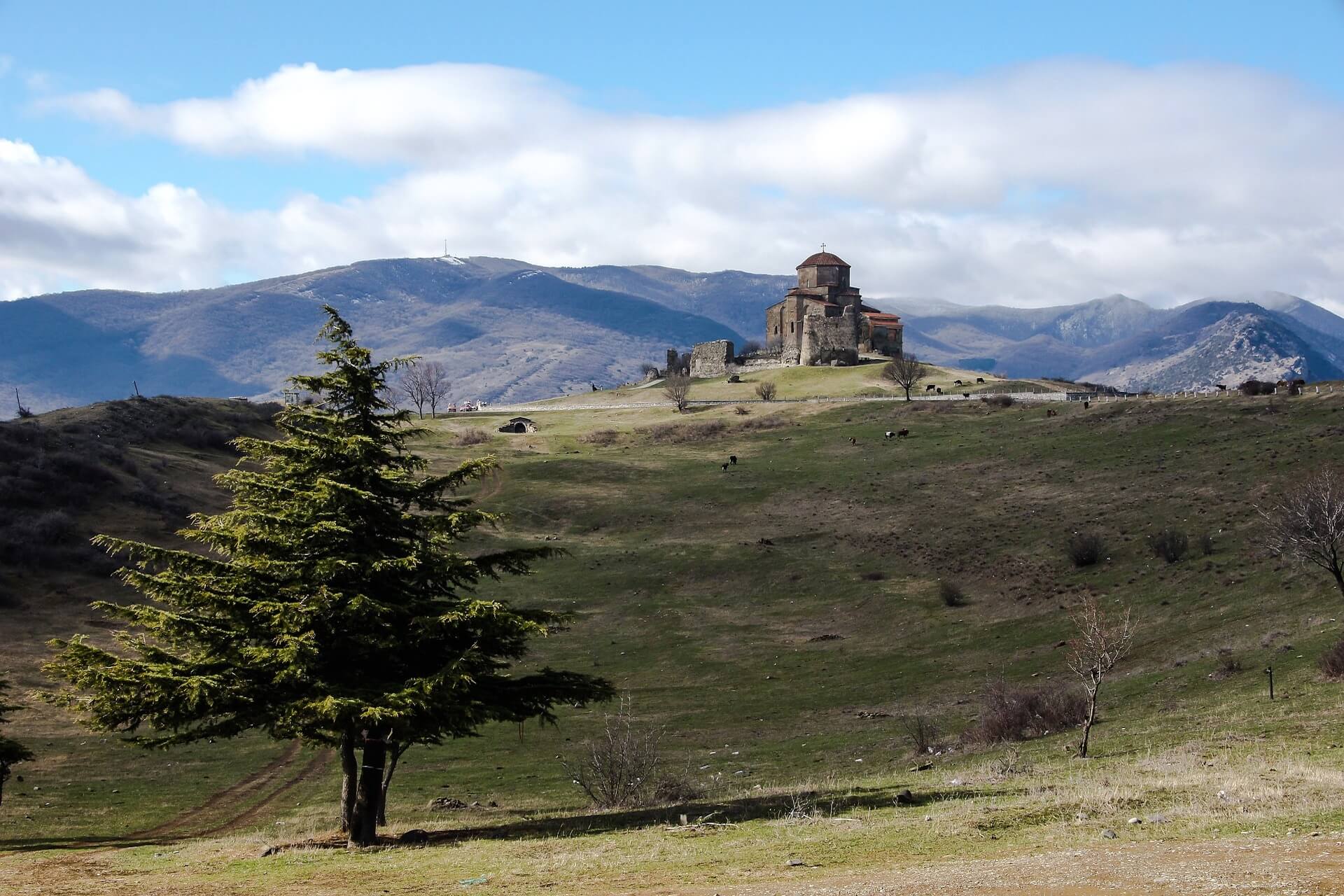
Mtskheta is an ancient historical center often called the “Second Jerusalem.” It is located at the confluence of two rivers and for a long time retained the status of the oldest capital of Georgia. Many local attractions are under UNESCO protection. For example, Jvari Monastery, a cult monument of early Georgian Christianity.
The ascetic beauty of strict lines is not disturbed by decorative elements, perfectly blending with the harsh appearance of the local nature. The external walls are adorned only with reliefs on the facades. Inside, fragments of ancient mosaics and the base where, according to legend, the Holy Cross symbolizing the advent of Christianity in Georgia was to be installed are still preserved.
However, the temple looked different earlier. According to preserved descriptions, it becomes clear that the cross was previously open, and any traveler could see it from afar. If you find yourself at the monastery, be sure to tie a ribbon on the Wishing Tree growing on one of Jvari’s windy slopes.
Shio-Mgvime Monastery
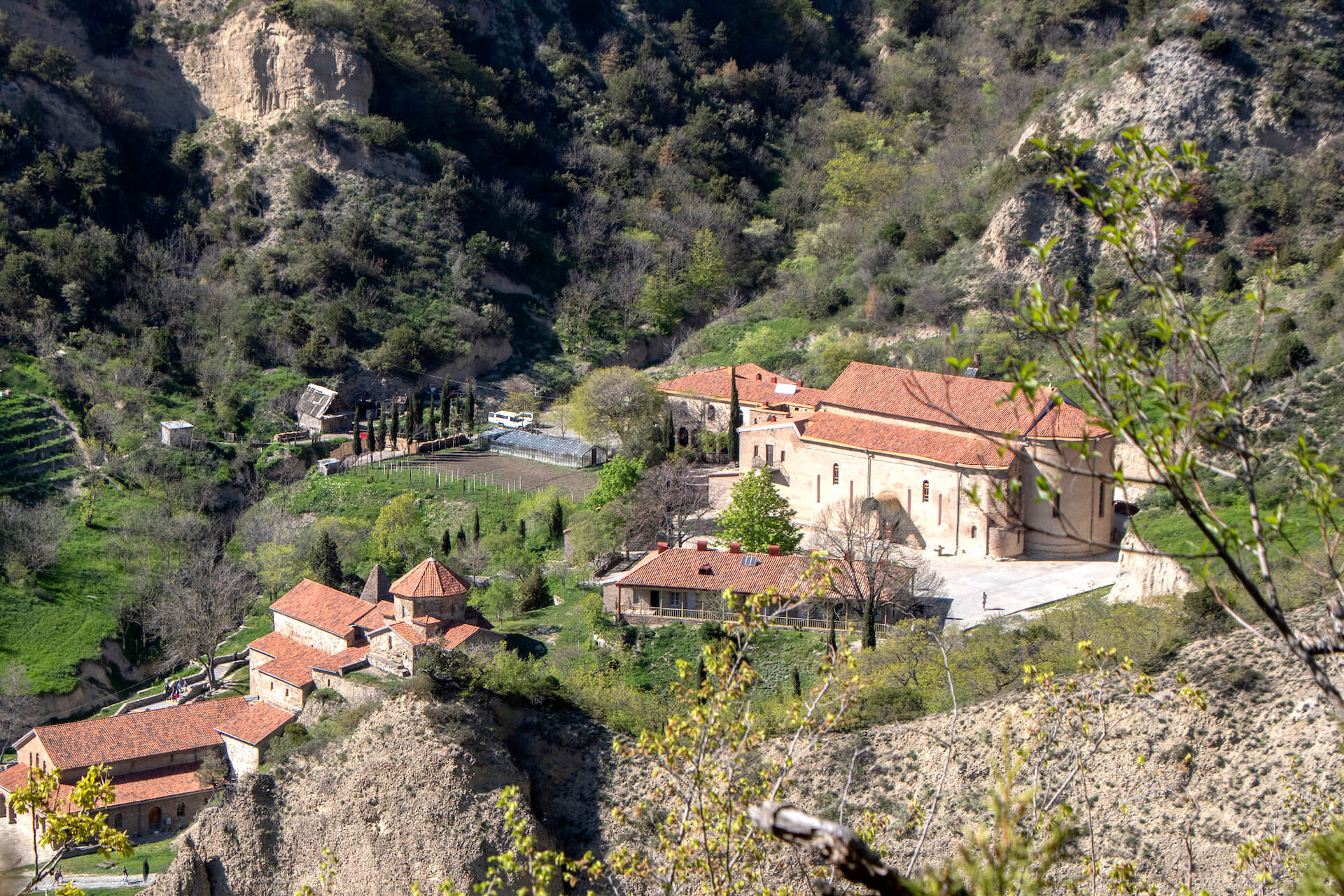
A landmark nearby is the ancient town of Mtskheta, which belongs to the category of places: if you haven’t been here, you haven’t truly known the Transcaucasian republic. The distance from Tbilisi to the final destination – the monastery is small, about 30 km. The road will take no more than an hour.
The first holy abode on this site was erected by the monk Shio Mgvimsky. As a result, the religious institution got its name Shio-Mgvime or “Shio’s cave.” The long-suffering monastery was repeatedly barbarically destroyed by the persistent Persians and fierce Ottomans.
Subsequently, it was reconstructed, and the interior was restored in the 19th century. The ancient structure is located among rock caves. It is famous for its rare, absolutely stunning icons and generally creates the impression of a very peaceful and clean corner among majestic mountains.
Tourists will have half an hour to explore the monastery and its grounds. Pilgrims from different countries come to this monastery to pray before the icon of Archangel Michael, which is believed to possess the strongest energy of goodness.
Sighnaghi
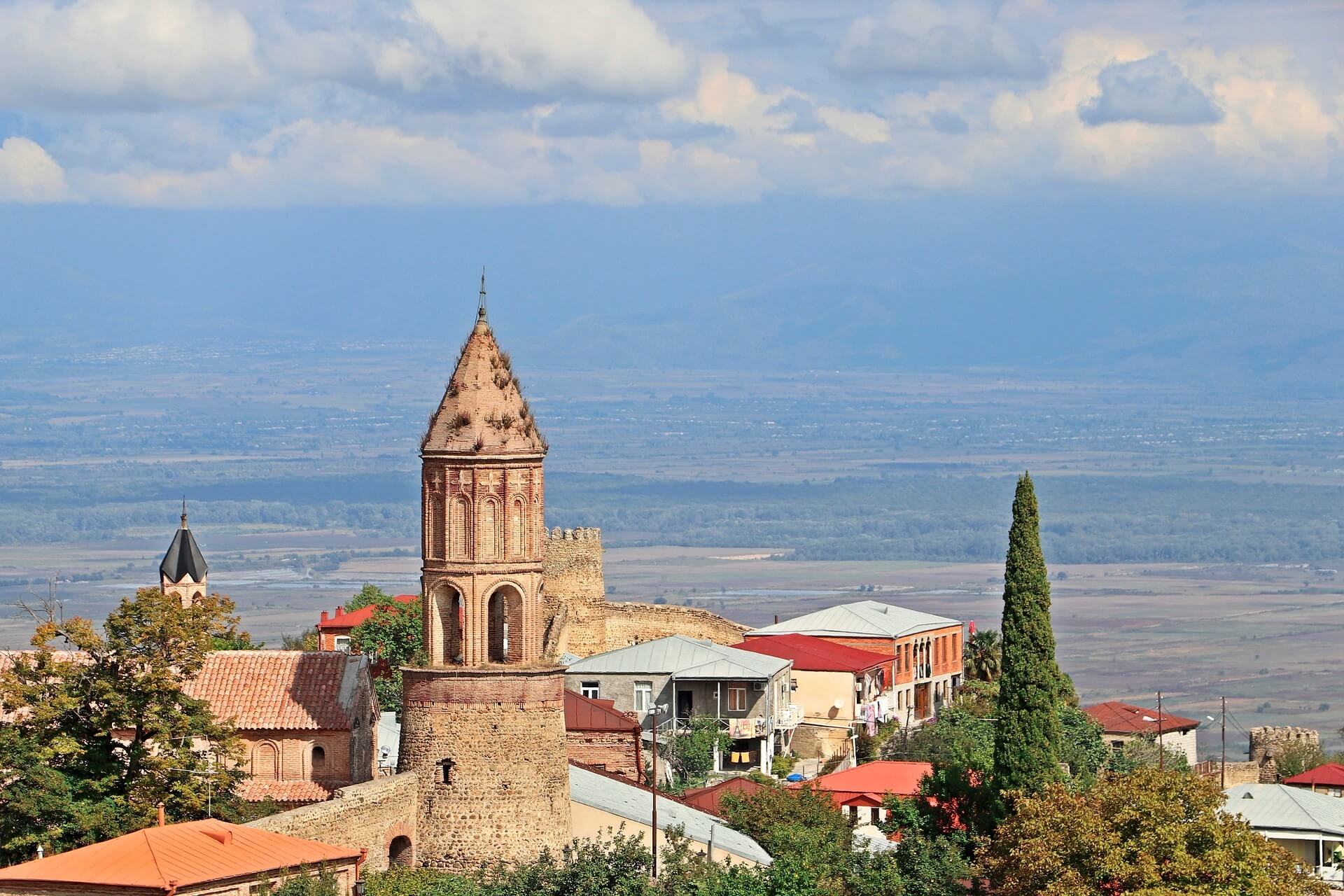
This town is often called the city of love. It stands among the hills and offers the best views of the Alazani Valley. It owes its nickname to Pirosmani, a talented artist who was born in these lands. He once decided to make a beautiful gesture and laid out a road of red roses for his muse and beloved.
Today, almost nothing is known about the history of Sighnaghi. There are fragmentary mentions that King Erekle II in the 18th century ordered the creation of this town presumably as a refuge from Persian attacks. Gradually, the town fell into decline, but in the 20th century, the local authorities undertook a full-scale restoration.
Now the narrow cobbled streets and tiny houses with red-tiled roofs look very well-kept and are immersed in vibrant blooms. But there is also a downside to such calculated beauty – Sighnaghi is good if you want to see a full-size tourist model, but it’s not worth going here if you want to immerse yourself in the real pulse of Georgian life. For this, you will need to visit one of the surrounding villages.
David Gareji
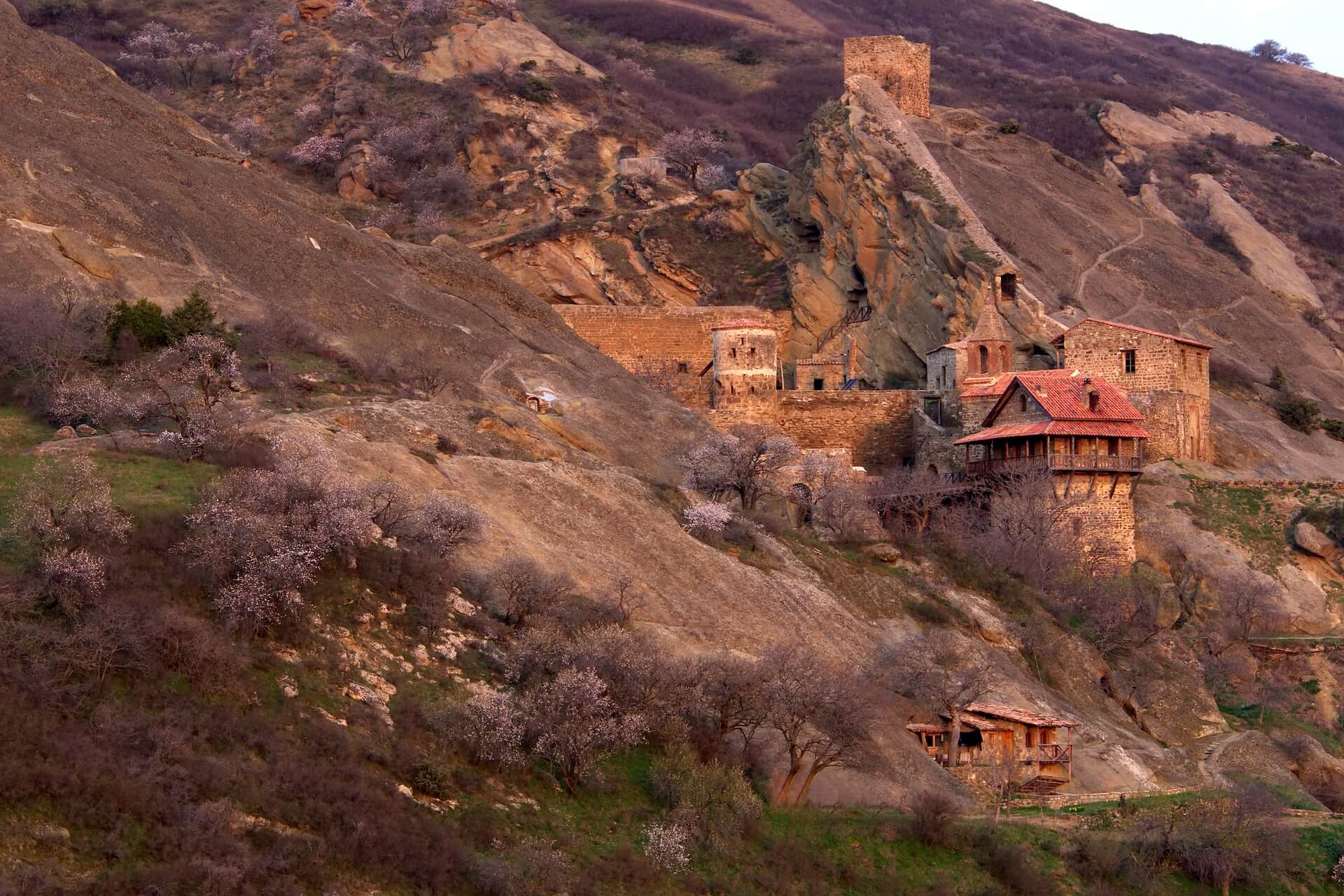
Along the border of Georgia stretches a large complex of cave monasteries, collectively called David Gareji. Today, their significance in the local religious world is comparable to Jerusalem – thousands of pilgrims visit the David Gareji Monastery annually, founded in the 6th century when Saint David, taking 12 monks with him, decided to settle in the Gareji desert.
They settled in one of the caves and lived a life of complete asceticism. Gradually, local caves filled with followers of David. Particularly Saint Dodo, inspired by his example, founded a monastery here, which is today known as the Dodo-Rka cave complex and is considered one of the most significant parts of David Gareji.
To study all the local monasteries would take more than a day, so tourists usually limit themselves to the “small circle,” which includes the Lavra of David and the Tetrudabno. To see them, you will need no more than 3 hours. The Lavra of David has both above-ground and cave premises. It is the most beautiful architectural monument of the complex and contains ancient frescoes preserved in their authentic form.
Stepantsminda
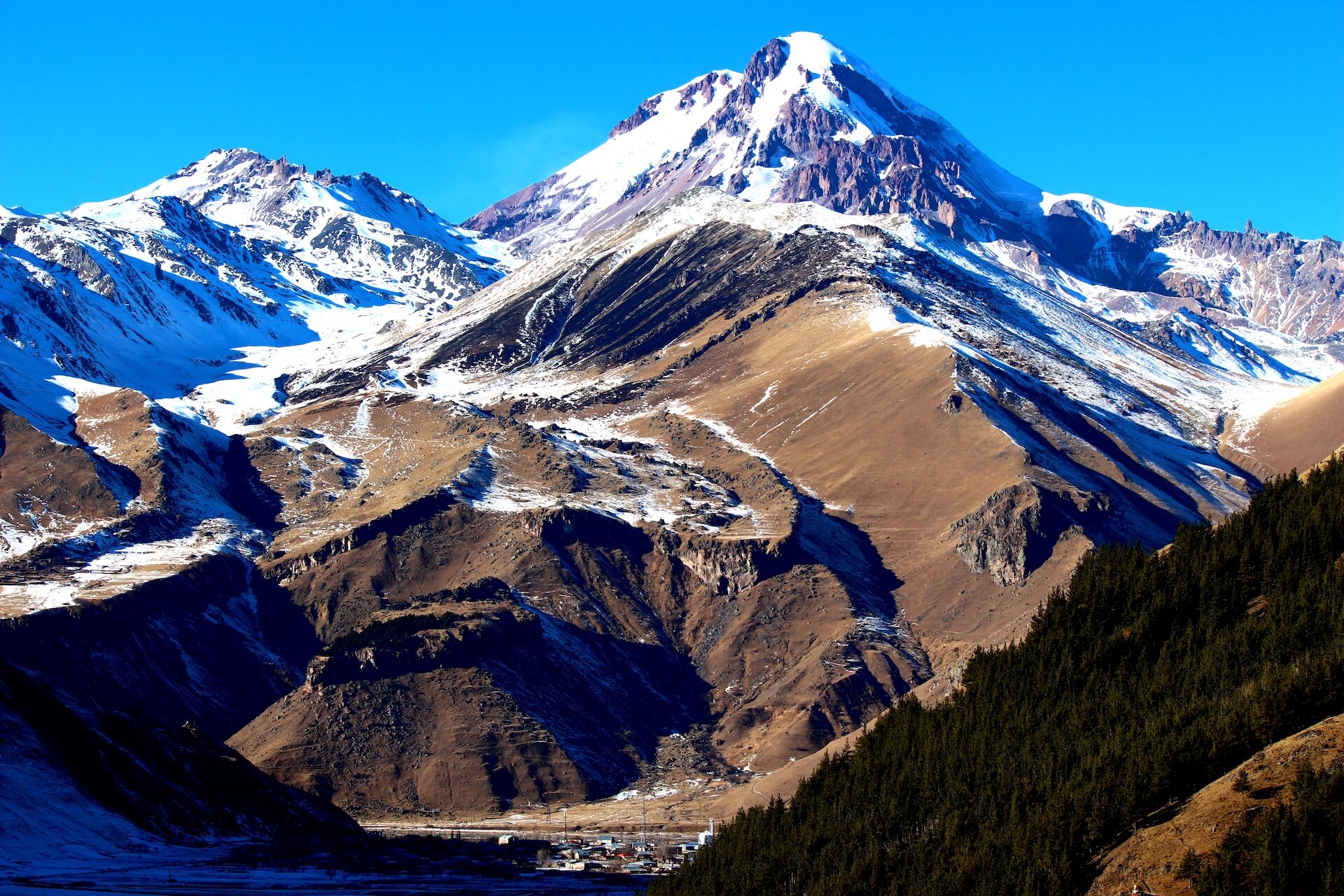
This is where the first Russian-Georgian settlement was once located – among the mountains and piercing winds. This is the very corner of Georgia that it is simply impossible not to fall in love with – the atmosphere of this place is so lively and pure. Unfortunately or fortunately, most of Kazbegi’s attractions can only be reached on foot.
You should start with the Trinity Church, located on the mountain’s summit. In cloudy weather, the valley is not visible – only heavy clouds, but in clear weather, you can see glaciers sparkling in the sun and even Kazbek – another calling card of the country. This mountain is covered with snow all year round and has an extremely capricious character – only true daredevils risk climbing here.
You can test yourself and join one of the groups that set out daily to conquer Kazbek. Another beautiful natural treasure of Kazbegi is the Dariali Gorge – an extremely picturesque place but equally dangerous – there are often glacier descents, and the local cliffs are steep. But it is worth descending to the bottom – among the sparkling white boulders and smooth stones stand Tamar’s Castle and the Archangel Church.
Rustavi
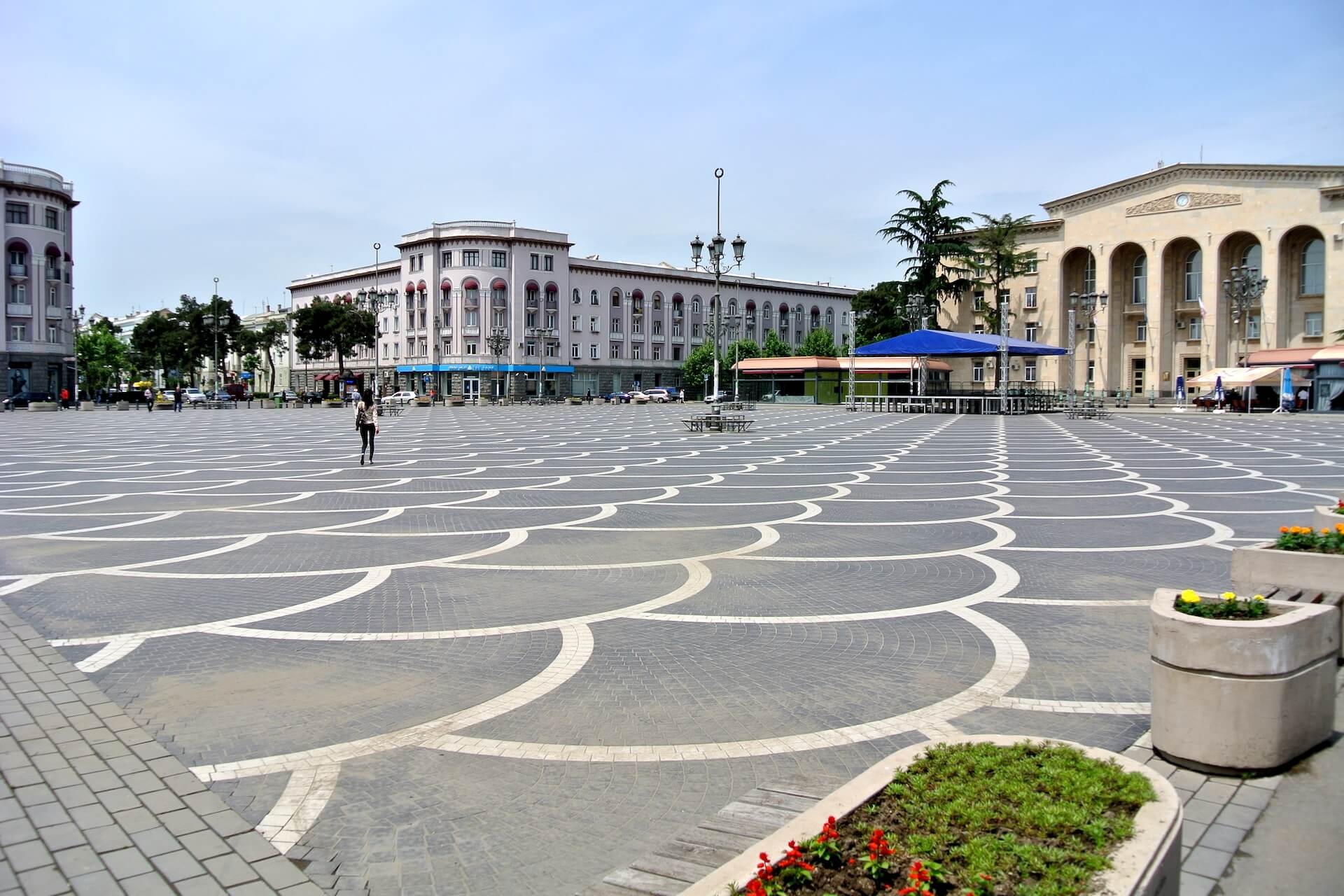
Considered the youngest city in the country. Located 25 km from the state’s capital. A taxi will easily take you to the destination, and the best version of public transport is a minibus departing from the Didube metro station.
Return trips are facilitated by stops in Rustavi both at the city exit and at the bridge over the Kura or on Kostava Avenue. The settlement is symbolically divided into 2 parts by a fast water artery. The right bank of the Kura is lovingly called by the locals “our example of life in Soviet times.”
It is even called an open-air monument of that era. Lovers of more “old” architectural masterpieces will have to walk to the southeastern suburbs, and if you want to touch the “breath” of deep antiquity – to the monastic complexes of David Gareji.
Tourists should note that the constellation of ancient holy abodes is not in Rustavi itself but several tens of kilometers from it. The cave structures seen there in the number of 20 pieces amaze the imagination with their laconic severity. The highlight of this object in the Rustavi surroundings is the Lavra of Saint David.
Fans of Georgian nature’s beauties will delight in Rustavi’s charms such as the Rustavi forest, accompanying the Kura right along the shore, and the Yagluja ridge. The latter can be found above Lake Kumisi. All local natural gifts will appear in all their glory to those travelers who decide to climb the famous Rustavi cross. You can reach its highest point on foot in 45-50 minutes.
Okatse Canyon

A new addition to the list of Georgia’s natural attractions. Location – surroundings of Kutaisi (distance from this city about 50 km). To fully enjoy the stunning Okatse Canyon, you need to leave Tbilisi early in the morning and return only at night.
The one-way distance is significant – 203 km. Possible transport options: train, taxi, rented car, bus. Travel time from 4 to 5 hours.
The picturesque canyon is divided into Upper and Lower parts and stretches for 16 km. The most mesmerizing objects on-site are the fairy-tale-like Kinchkha Waterfall, which seems like a decoration for some mountain travel movie, and a two-level bridge over a somewhat scary abyss with a series of convenient observation platforms.
This crossing is located at a height of 140 m, and the views are such that they take everyone’s breath away. The starting point for tourists is the village of Zeda Gordi; you will have to walk about 1 km along an absolutely safe path.
Daredevil travelers who decide to go further will walk another 2.5 km to the bridge, but the road cannot be called tiresome. On the way, tourists will encounter the ruins of the Dadiani Palace, and they will be accompanied everywhere by birdsong, forest sounds, and incredibly beautiful nature pictures. Viewing the complex is paid.
Dmanisi and Bolnisi
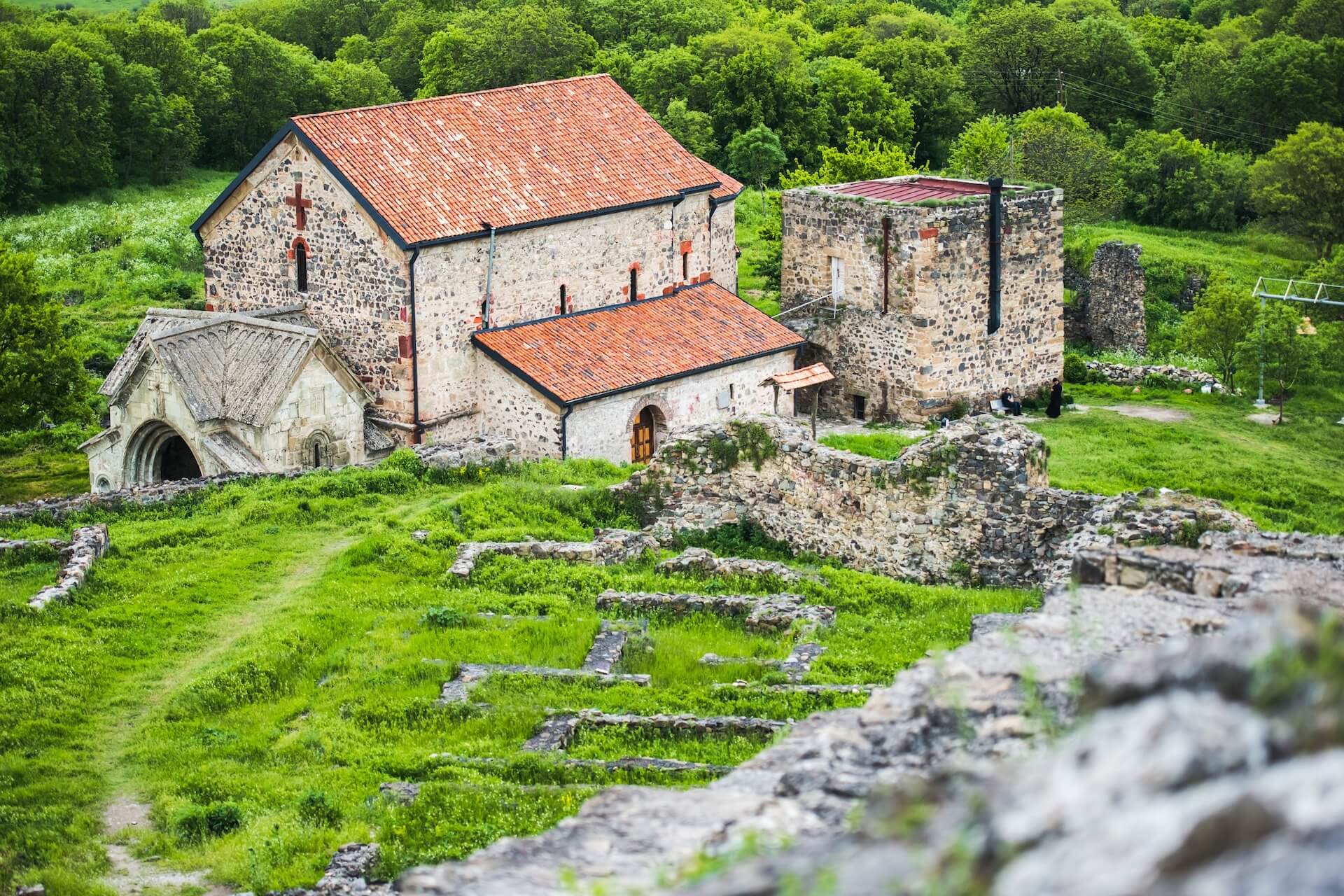
A trip to Dmanisi and Bolnisi will definitely turn into a small journey into Georgia’s historical past, to those distant times when the Christian banner appeared in the Caucasus, and the Georgian language began to acquire its characteristic features.
Gradually moving south, you will encounter numerous architectural and historical monuments of the 5th-6th centuries, which, as you know, are still the most saturated and mysterious in the country’s history. Modern Bolnisi stands on the site of the ancient city of Tsurtavi, which for unknown reasons simply disappeared from all maps one day.
Its main attraction is Bolnisi Sioni – the oldest church in Georgia, whose status is officially determined. Dmanisi’s origins are more definite – it stands 10 km from the eponymous fortress city, destroyed in the Middle Ages. Excavations of the 17th-century settlement are still ongoing on the territory.
Thus, the more or less preserved parts of the city are open for visits: the three-church basilica, a unique 6th-century monument, the church porch, part of the fortress walls, and the city gates.
Martvili Canyon
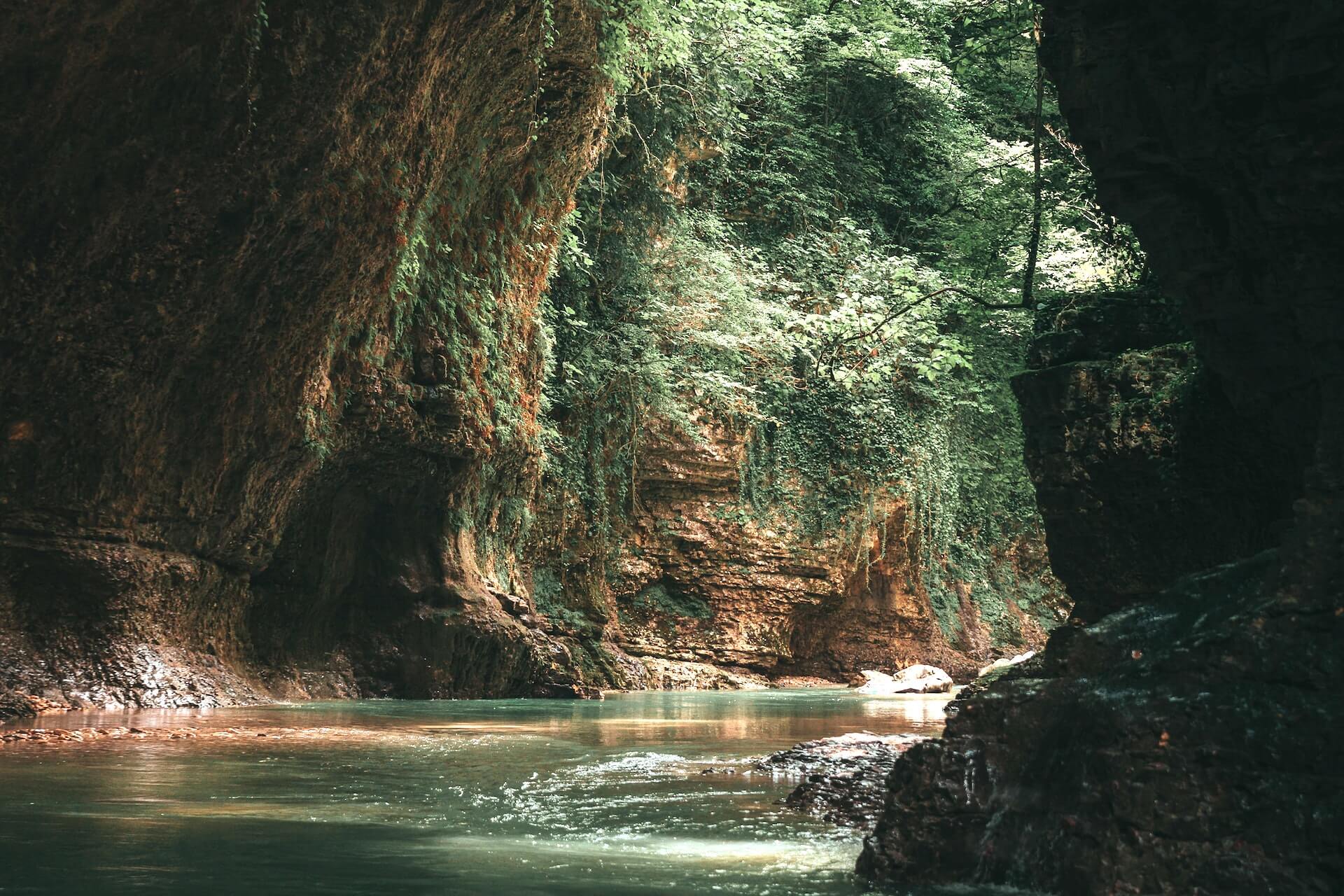
The second name is Georgian Troy. According to legend, this is where the brave Argonauts once came for the Golden Fleece. In ancient times, people of the famous Egrisi Kingdom lived here. Location – Samegrelo region. A landmark on the ground is the abandoned village-fortress Nokalakevi.
Experienced tourists have already calculated that it takes about 11-12 hours to travel to this corner from Tbilisi and back. The best option for visiting is an individual tour with a qualified guide. A guide will definitely not be superfluous on these paths. Scientists claim that the canyon was formed back in the Mesozoic era.
The entire gorge stretches for about 2.5 km. Remarkably, long ago, creating this unmade natural creation, the Abasha River persistently carved its way among the snow-white limestone rocks and harsh mountain peaks. Since then, the magical picture seems frozen in one place.
During a walk through the canyon, tourists will have the opportunity to see how in some places, rocks “stick out” of the water, sometimes rising above the water body at a height of 30-40 m. The sight is stunning, and photos taken against its background turn out to be somewhat mystical; you would never guess where in the world such captivating beauty can live.
Another gift for travelers on this route is the additional opportunity to see the Gelati Monastery and Bagrati Cathedral, which are on the UNESCO World Heritage list for their amazing architecture.
Birtvisi Canyons
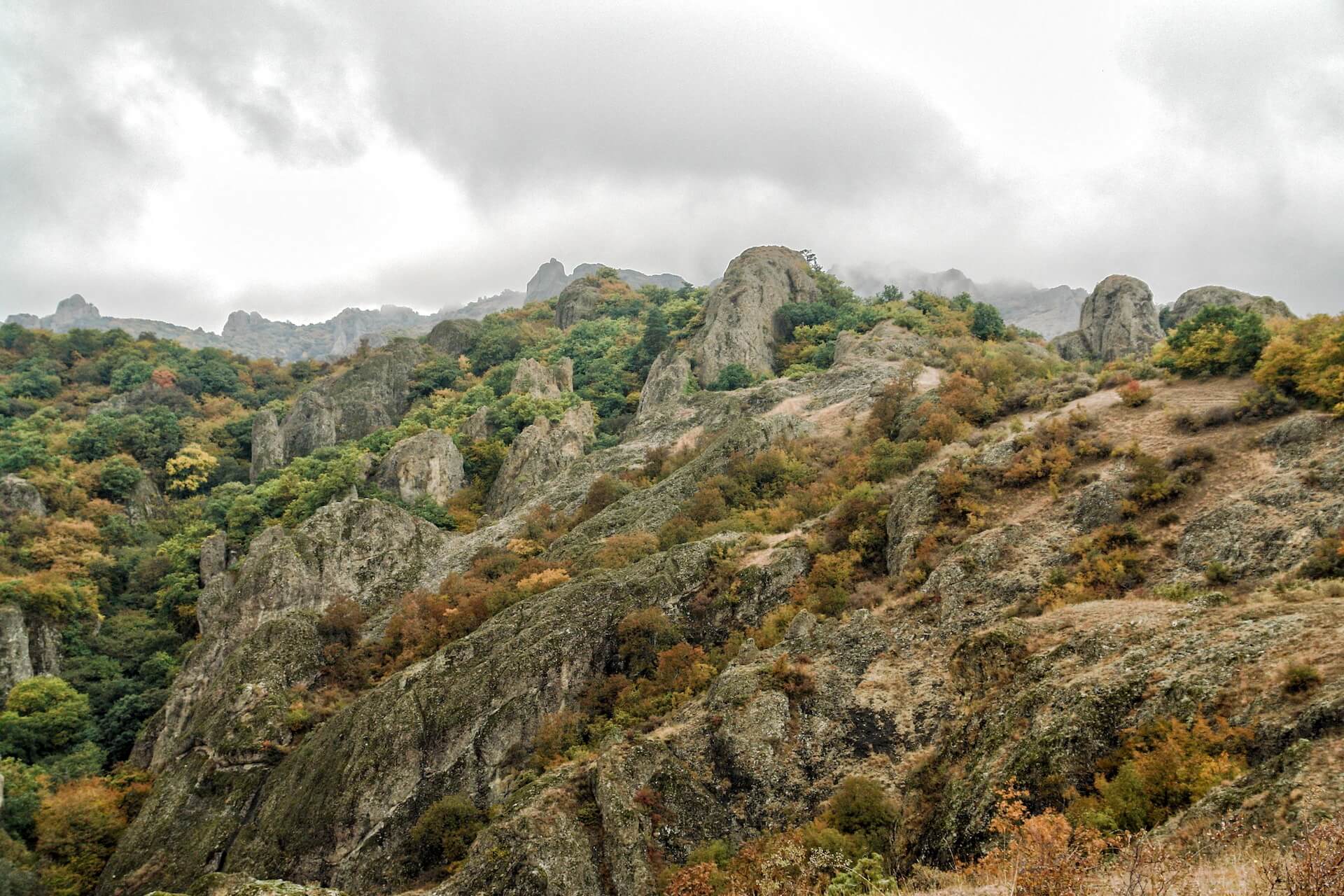
Essentially, they are fortresses created by Mother Nature herself. The “construction” material of this landmark is volcanic rocks, outwardly resembling quite harmless cement. Distance from Tbilisi – 80 km. While traveling through the canyons, you will have to walk a lot.
The start of the route laid for tourists is the village of Partskhisi. The path itself winds among the improvised rocky “teeth,” creating a stony labyrinth among the gorges by lively mountain streams. These places have long been popular with fans of “adrenaline” activities. In particular, climbing is highly esteemed.
The best option for a trip to the rocky “citadels” is individual excursions with a guide. They will lead you to the waterfalls along the laid “lines” among the rocks and help you swim in the natural baths-reservoirs if travelers are not discouraged by the cool water temperature.
Only true nature beauty enthusiasts usually wander along the so-called “wet” route; without suitable attire, the road here will seem unattainable. Only those tourists with appropriate physical training should venture into these places; the elderly and children will not cope with such a “walk.”
Akhaltsikhe and Vardzia
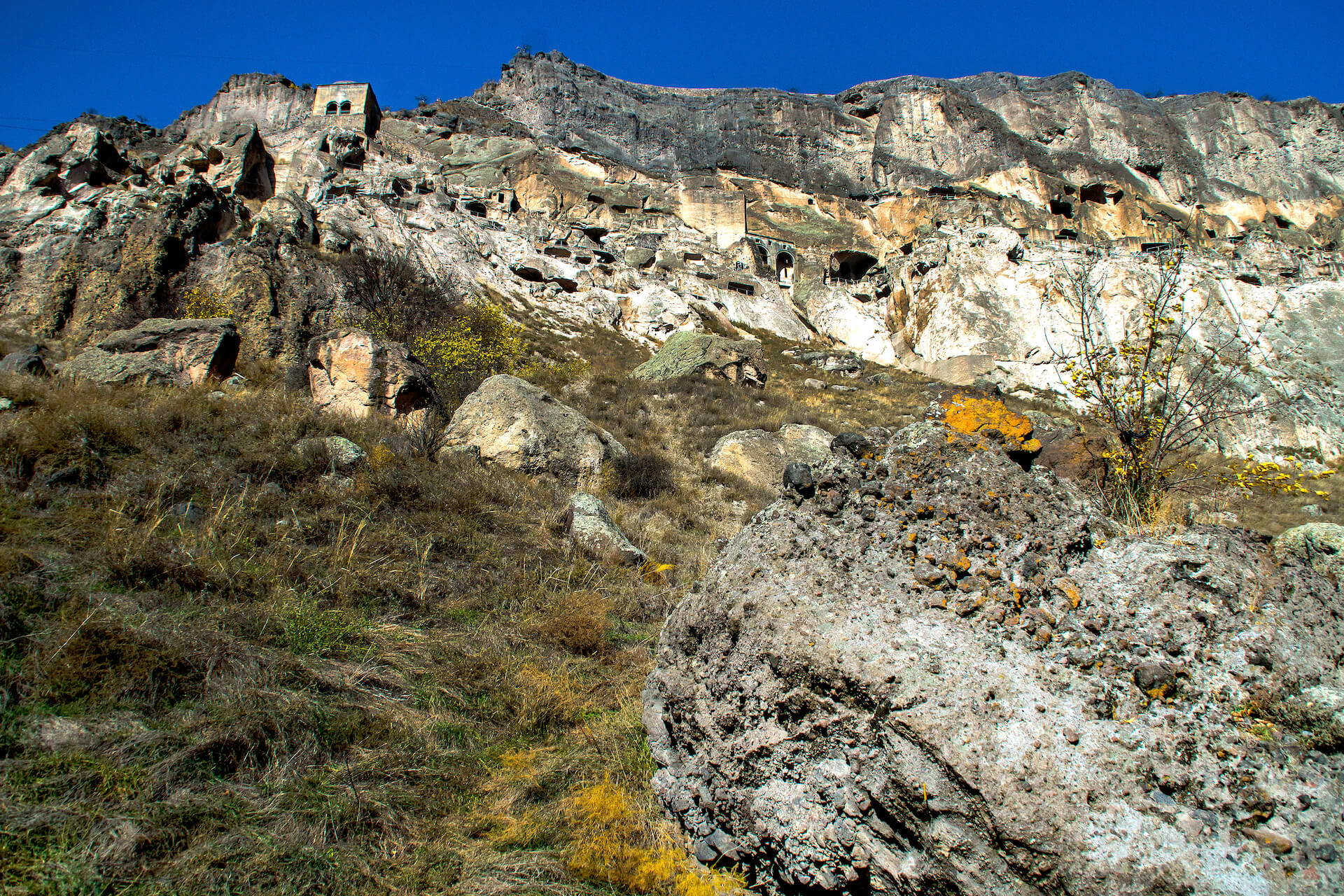
Akhaltsikhe itself is nothing particularly interesting unless you are, of course, looking for rural life romance. However, some landmarks that are conditionally related to the town are quite worth visiting. Among the latter are the Rabati Fortress, abandoned sulfur baths, and the cave monastery of Vardzia.
The monastery’s history is directly linked to Queen Tamar, whose father ordered several caves to be carved into solid rock. Once the Assumption Church stood here. At a certain point, its above-ground part was destroyed. The queen then ordered it to be moved to the carved caves and decorated with frescoes.
The order was executed precisely, and soon the first monks began to gather in the colorful painted church, and its territory began to expand. Gradually, the church became more complex in terms of structure – underground premises increased, and rizzas, refectories, and household buildings appeared on the surface.
A couple of centuries later, Vardzia turned into a perfectly fortified fortress city, where the entire population of the surrounding areas could take refuge in case of danger. Decline began in the 16th century with the arrival of the Persians first and then the Turks, who killed the monks and looted the monasteries. From that moment, the city lost its religious value and could not recover, turning into a cult architectural monument.
Kutaisi
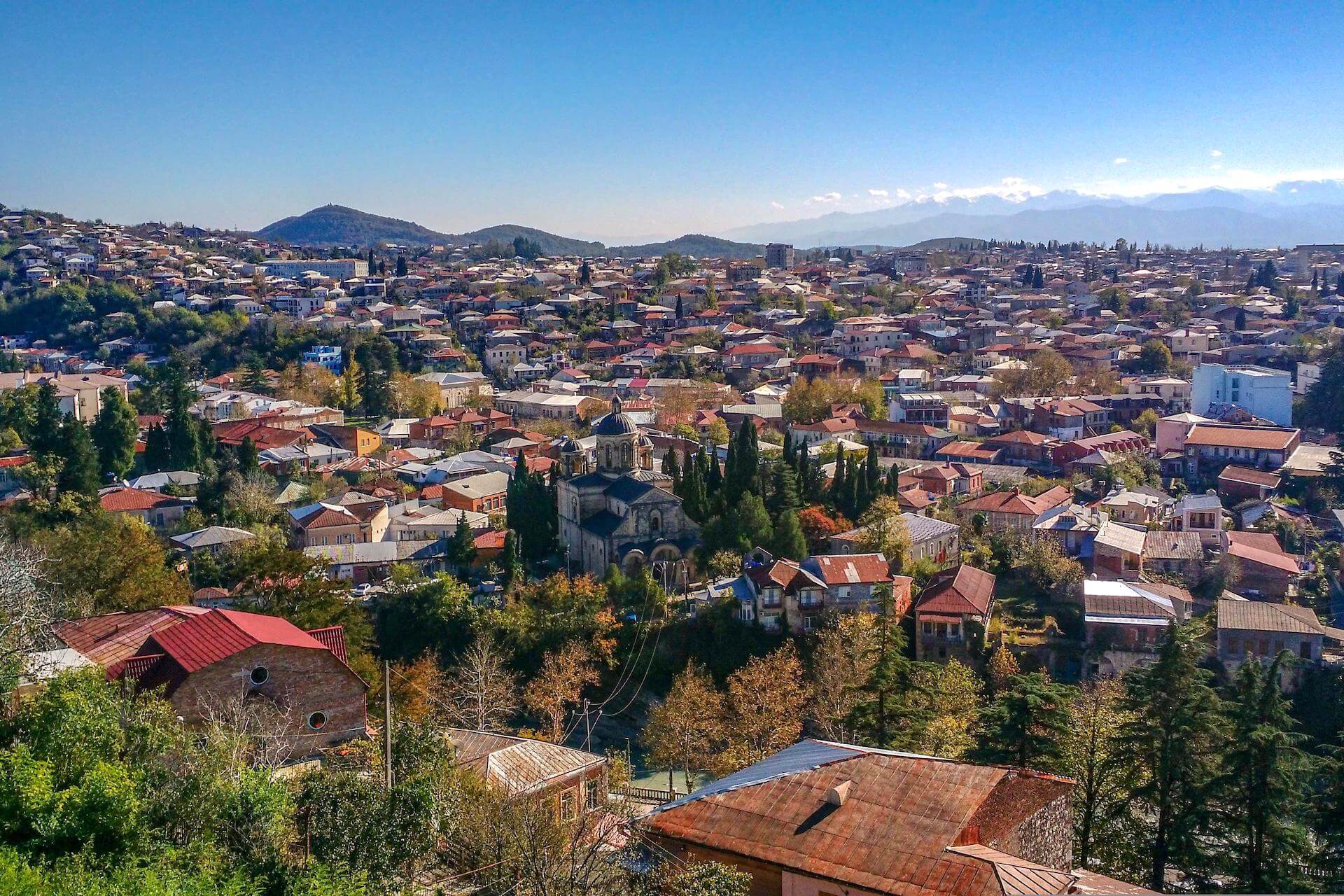
Kutaisi is an extraordinarily beautiful city that lies on both banks of the Rioni River. From ancient Georgian, “kuato” can be translated as “rocky,” which is entirely true for this city – it stands on a rocky plateau. Kutaisi is one of the oldest cities in the world, so the presence of dozens of “venerable” age landmarks is not surprising.
The old city lies on the right bank. If you look at it from the opposite bank, it resembles swallows’ nests – small two-story houses built a couple of centuries ago cling tightly to the slopes. The new city on the left bank begins with the glass hemisphere of the Parliament building – high-rise buildings growing from perfectly trimmed lawns.
Numerous bridge-arms stretch across the Rioni, from which you can take quality panoramic pictures of the city. Among the most important tourist places are the 10th-century Bagrati Cathedral, the Motsameta Monastery built on the site of a Muslim massacre of Georgians, and Okros Chardakhi, and Okros Chardakhi, the former residence of kings.
Gudauri
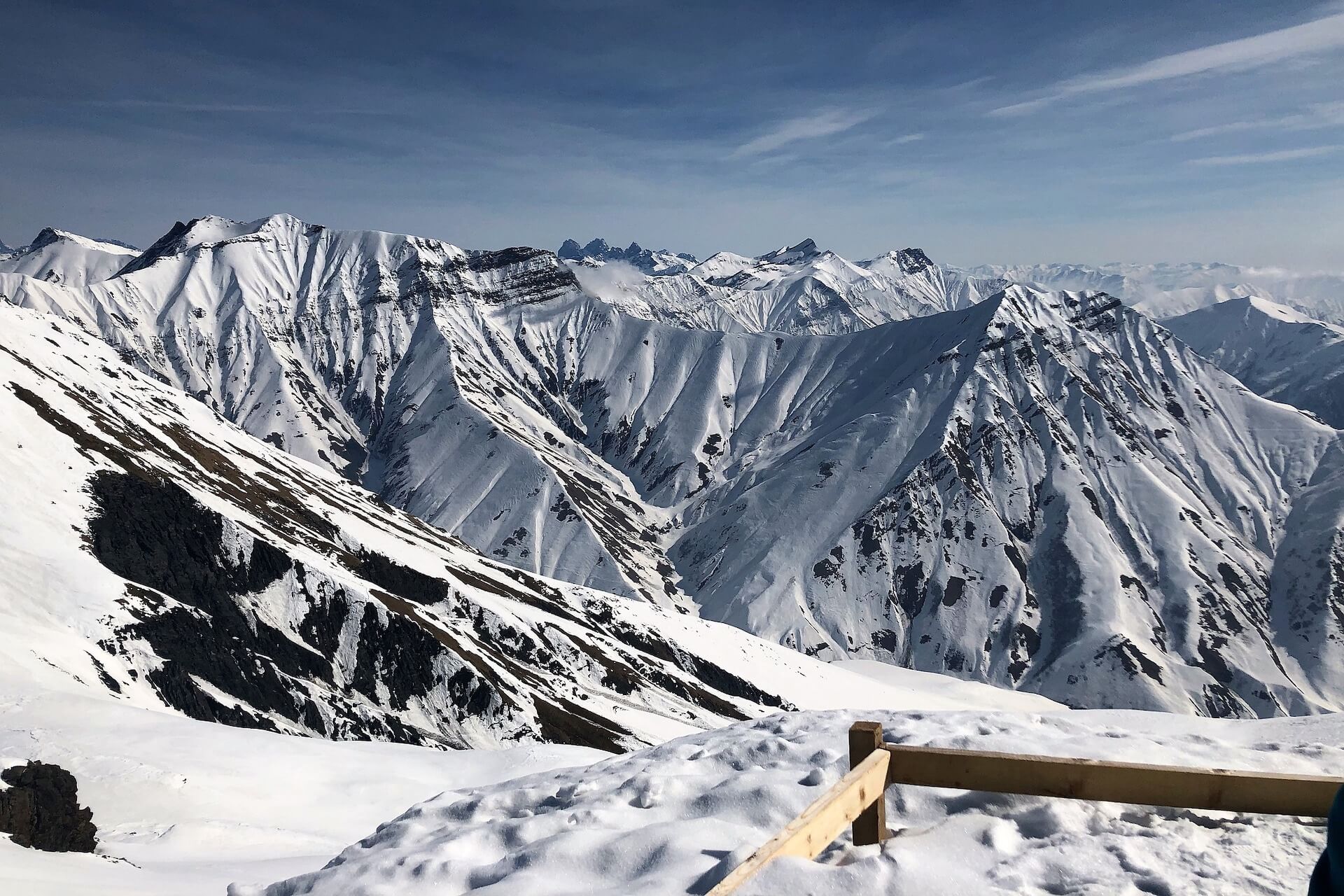
Fans of skiing have long dubbed this winter resort “mountains with a truly Georgian temperament and character.” The infrastructure is excellent, with everything needed for engaging in pleasant activities, tasting wonderful culinary masterpieces, and leisurely strolling along the gentle slopes of the Kudebi and Sadzele mountains.
The younger generation of travelers won’t be bored here either, as there are plenty of playgrounds with outdoor attractions. The best time to visit to satisfy your skiing “hunger” is from December to April when the slopes are covered with a thick fluffy layer of white snow.
In the summer, tourists also love to come here to admire the stunningly picturesque landscapes, wander through the “Alpine” meadows with wildflowers and a bright carpet of mixed grass, and breathe in the sweet, thick air filled with the aromas of flowering plants. The distance from the Georgian capital to the ski resort is 122 km.
The best way to get there: taxi, rented car, or a scheduled bus. The road will pass through a picturesque serpentine in the midst of a mixed forest. The scenes outside the window will amaze with their genuine charm, with places to stop and satisfy your appetite. There are many grocery stores, bakeries with fresh national pastries, cafes, and cozy taverns along the route.
Algeti National Park
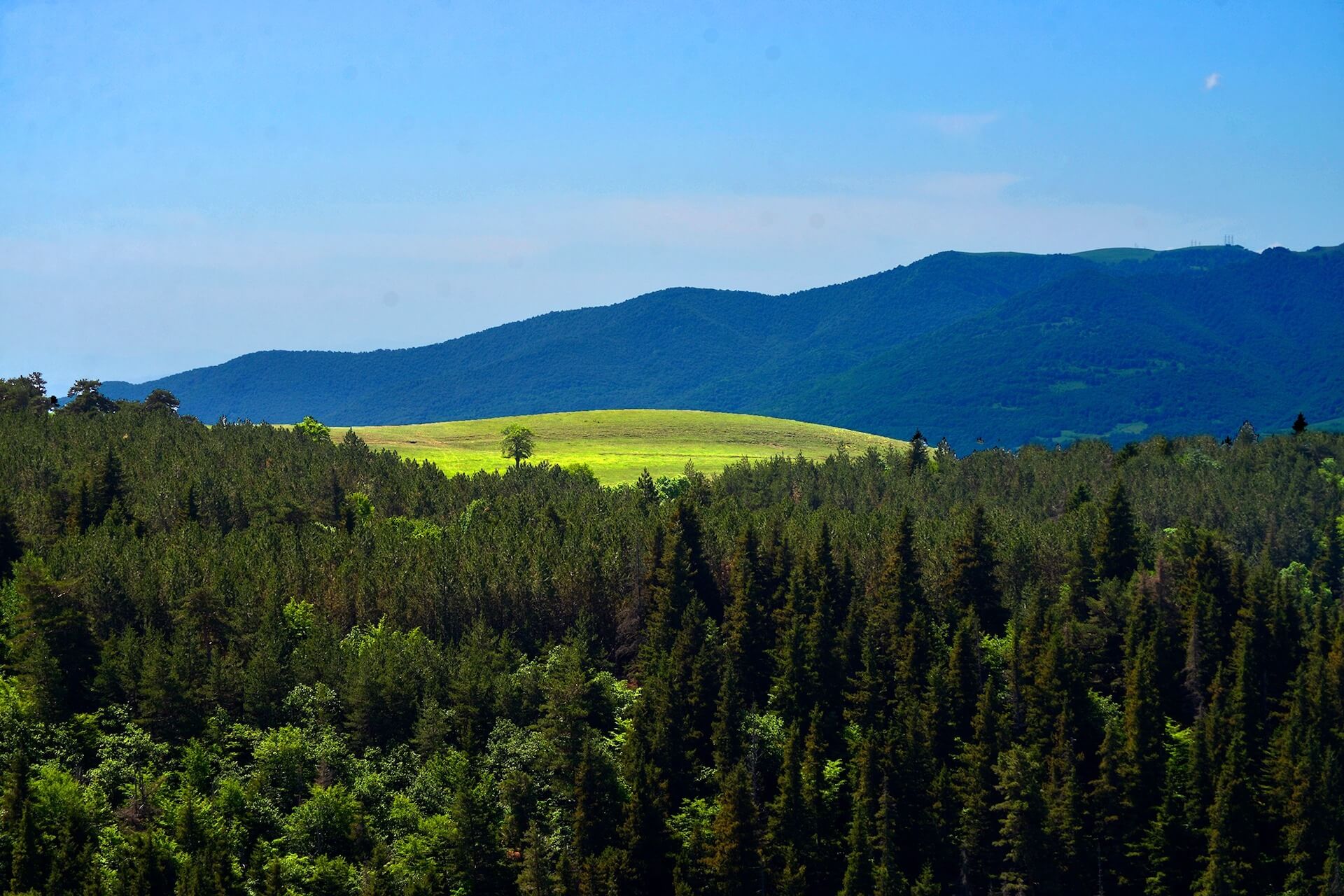
The main essence is a wonderful mountain reserve. When traveling independently, you should orient yourself to the town of Tetri-Tskaro, located in the southeast of the Trialeti Range. But the best version is still to call it a tour of these mountains with an experienced guide or a local resident who knows all the features of this region well.
The status of a natural landmark is “a national park protected by the state.” This picturesque spot received it in 2007. The main treasure of these forests is massive plantations of rare fir and spruce species. The air in these areas is literally saturated with the aromas of pine trees, and walks here are recommended for everyone with lung and bronchial problems.
The area of the property is 6.8 thousand hectares. Most of the territory is occupied by dense forests, but there are also many rivers and small lakes. Tourists should note that warm clothing and comfortable shoes are needed for the trip. The mountains and the forest always have high humidity and are cool. The height of the park above sea level ranges from 1,200 to 2,000 meters.
The flora is beautiful here, with many oaks, birches, aspens, and maples accompanying the coniferous trees. There are wild pear trees, thickets of honeysuckle, and blueberries. In the forest thickets, both “tame” and wild representatives of the fauna live.
Wild boars and bears, although present in the reserve, are unlikely to come out on tourist trails, but a meeting with a nimble fox, a quick hare, and even a Caucasian deer or badger is quite possible.
Truso Gorge
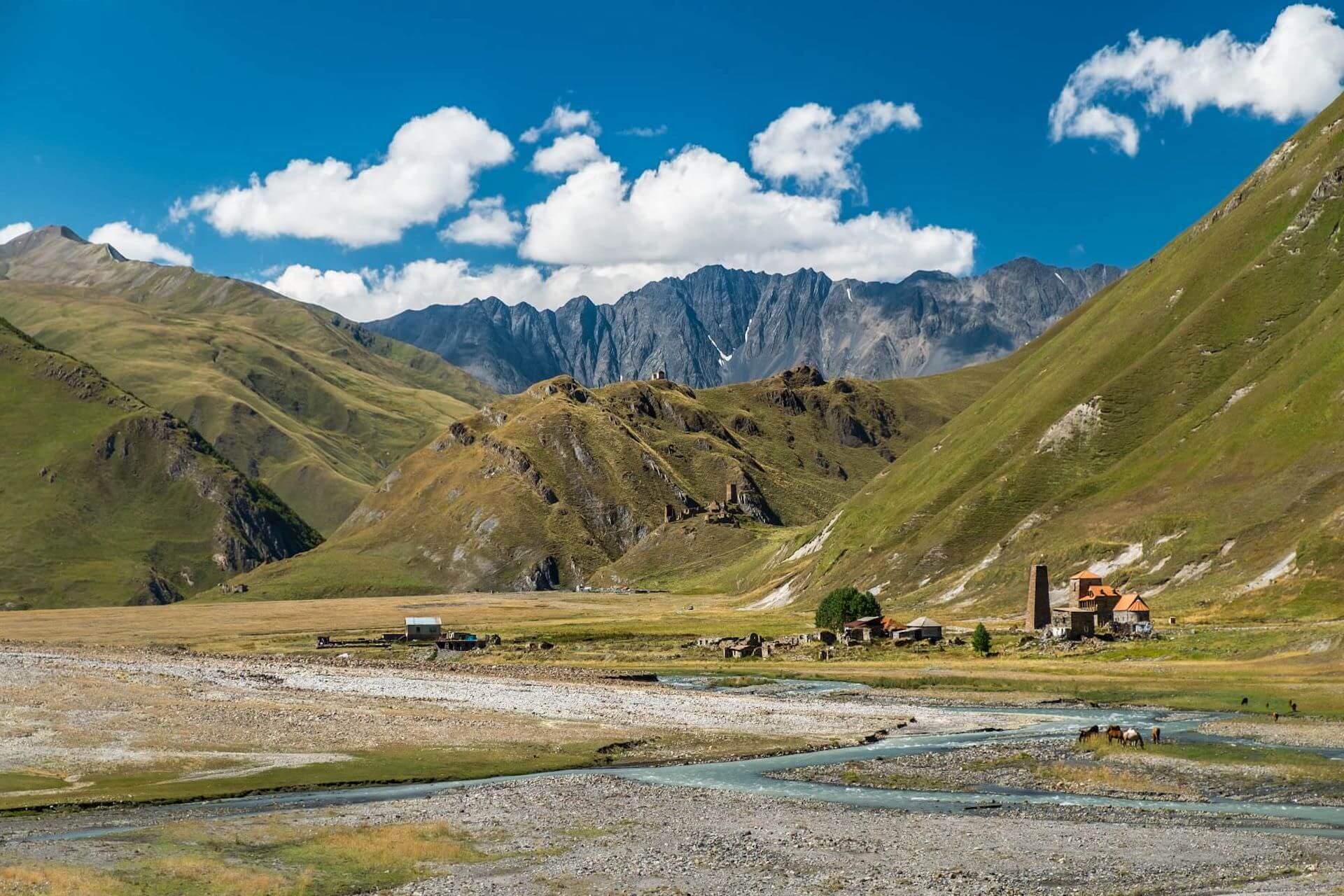
The Truso or Tyrsogom Gorge is a truly amazing place. Mineral springs, geysers, pristine natural beauty, complemented by the ruins of ancient structures and villages long abandoned by people. For centuries, this gorge was considered one of the most dangerous and inaccessible in the country.
To see the valley’s panorama, you will have to drive along a serpentine road. The road is extremely winding and runs along the glacier, which does not make it safer. But it is worth it. The entire gorge is dotted with villages like Ketrisi. A few shepherds and milkmaids live there.
The local population has slightly increased due to the sisters of the women’s monastery, but it remains very small. It is noteworthy that masters of tower construction have long settled in the gorge, and today almost every village has its own skewed architectural thought shard.

